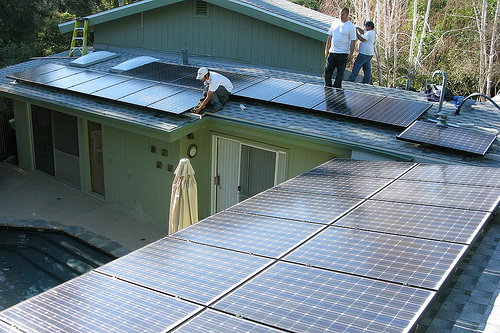In Michael Webber’s Op Ed in the Sunday, March 21st Austin-American Statesman, he beautifully explained why solar is now ready to become the next big energy source, but was shy on steps that the Texas legislature or our local public utilities could take to reduce energy costs while creating a local solar manufacturing boom.
We can do the same thing for solar that we did for wind. Set a modest statewide goal, say – 5,000 MW by 2025, and require every utility to buy some solar so they can get used to it.
When the sun is the hottest is when solar makes the most energy, during the summer in Texas that is also when our peak demand for electricity occurs. Meeting peak demand is often 3-4 times more expensive than the average cost of power. If small solar energy owners were paid market price for the energy they produce on peak you’d see solar everywhere.
Solar incentive programs work. Austin and TXU have had programs like this that pay about 30% of the cost and have been sold out. This program has kick started local industries and attracts installers and manufacturers.
Solar can cut costs and pollution (the amount of greenhouse gasses released into the atmosphere per unit of energy produced is 500 times less than coal), but the industry needs a little push. If the state of Texas and local utilities adopt all three of these goals, we’ll be on the way to a solar boom.
###
By promoting cleaner energy, cleaner government, and cleaner air for all Texans, we hope to provide for a healthy place to live and prosper. We are Public Citizen Texas.



